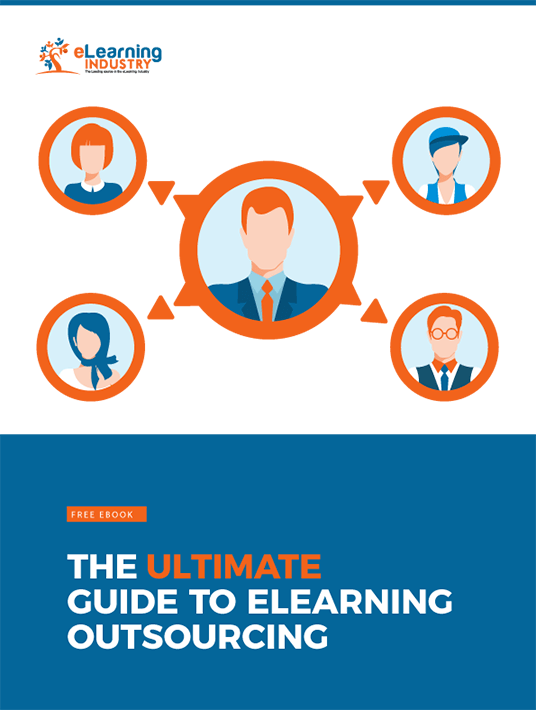How To Create A Realistic eLearning Outsourcing Budget
In order to get an idea of just how much eLearning outsourcing is going to cost, there are a few crucial questions that you need address. Your HR, accounting and management departments are key players in this process. Broaching these 6 budgetary concerns now can help you avoid headaches later on.

1. What Is Your Training Goal?
When you start planning your eLearning course, the training goals, objectives, and outcomes should be a top priority. Are you informing your staff about new policies and procedures? Are you training them to provide better customer service? Do they need to stay current with compliance rules and regulations? Your training goals dictate every aspect of your corporate eLearning program. A simple user interface with short modules may be ideal for basic online training tasks. You may not even need any eLearning videos or simulations. Perhaps plain text with an easy quiz for feedback will be sufficient. On the other hand, more involved goals and objectives may require more involved online training activities, as well. For example, interactive online training simulations and branching scenarios, which generally require a significant amount of time and resources, cost more money.
2. Is Your eLearning Vendor Using An Agile eLearning Development Process?
Understanding the eLearning development process that your eLearning partner uses also helps you create a realistic eLearning outsourcing budget. In the past, eLearning developers often worked in a linear way. They waited until an eLearning module was fully completed before being able to go back to work on revisions. This is a costly process because a lot of time is spent working on finalizing the eLearning module, and your company foots the bill for this. However, you may have envisioned something quite different. As a result, the eLearning developers would have to start from scratch, leading to even more development time and expenses.
One of the most popular agile eLearning design approaches many eLearning outsourcing companies use is the Successive Approximation Model, also known as the SAM approach. This approach allows you, as a client, to revise the corporate eLearning program throughout the development process. All of the revisions can be addressed immediately, rather than at the end of the development phase. This can save time and money, while also giving your company the chance to provide input throughout the eLearning development phase.
3. What Is Your Timeframe From Inception To Rollout?
As with any major eLearning project, the faster you want it, the more it will cost you. At the same time, taking too long can cost you more money than you would like. Therefore, finding the right balance is key. Be realistic about your delivery dates and rollout, then make them very clear to your eLearning vendor. You may need to compromise on the degree of eLearning interactivity or a less sophisticated design if your deadlines are short. Moreover, your costs may go up if you're looking for rapid turnaround times. Make sure that you discuss all of your requirements regarding desired time frame to keep the eLearning outsourcing budget on track. This also helps prevent any extra eLearning costs due to missed deadlines or unrealistic expectations.
4. Do You Need Your Corporate eLearning Course In Different Languages?
Perhaps you have a large company with branches in various countries, or you have a client base from around the world. As such, you may need to provide your corporate eLearning course in a variety of languages. Ensure that you request this ahead of time and check with your eLearning vendor that translation services are available for your corporate eLearning project. This may add to your eLearning costs. However, factoring eLearning localization costs into your eLearning outsourcing budget is essential.
5. Measure Your Current Online Training Assets
Another important step in the process is taking stock of your current online training assets. Which also ties into the eLearning outsourcing budget. You might already have the eLearning authoring tools, the LMS, and the online training materials the eLearning vendor requires for the eLearning project. As such, you won't have to make room for these in your eLearning outsourcing budget. That said, keep in mind that certain eLearning content providers may prefer to use their own software. It's wise to take stock of your current online training assets and share them with the eLearning vendor. In fact, bring this up before they create the estimate so that they can factor it into their calculations.
6. Can You Save On Costs By Doing Some eLearning Content Development In-House?
eLearning outsourcing can become expensive if you rely completely on the contracted eLearning vendor. However, it may be possible to do some of the eLearning content development in-house and only outsource what is necessary. For instance, you may choose to outsource the eLearning platform customization. Many eLearning companies have excellent IT departments that can help you with this. Therefore, the online training content may already be available, but technical help may be needed to make this come alive online.
On the other hand, you may have a strong IT department that is already able to develop the technical aspects. You even have the eLearning authoring tools you need to produce high-quality eLearning deliverables. However, they are a bit lacking in writing your eLearning content. You could save your money by outsourcing just your eLearning course content, and then hand it over to the IT department so that they can work their tech magic.
Whether you're outsourcing or developing your corporate eLearning project in-house, you need to create an itemized eLearning outsourcing budget to allocate your resources effectively. Know what your goals are and aim to save money where appropriate. For example, only take care of the task in-house if it doesn't interfere with your employees' regular work duties. Be clear about your needs and expectations to ensure that the eLearning vendor understands your requirements and meets your needs.
Want to learn more tips about the benefits of eLearning outsourcing? Download our Free eBook: The Ultimate Guide To eLearning Outsourcing to get valuable tips and tricks on how to find the right eLearning outsourcing partner and plan for every eventuality.







